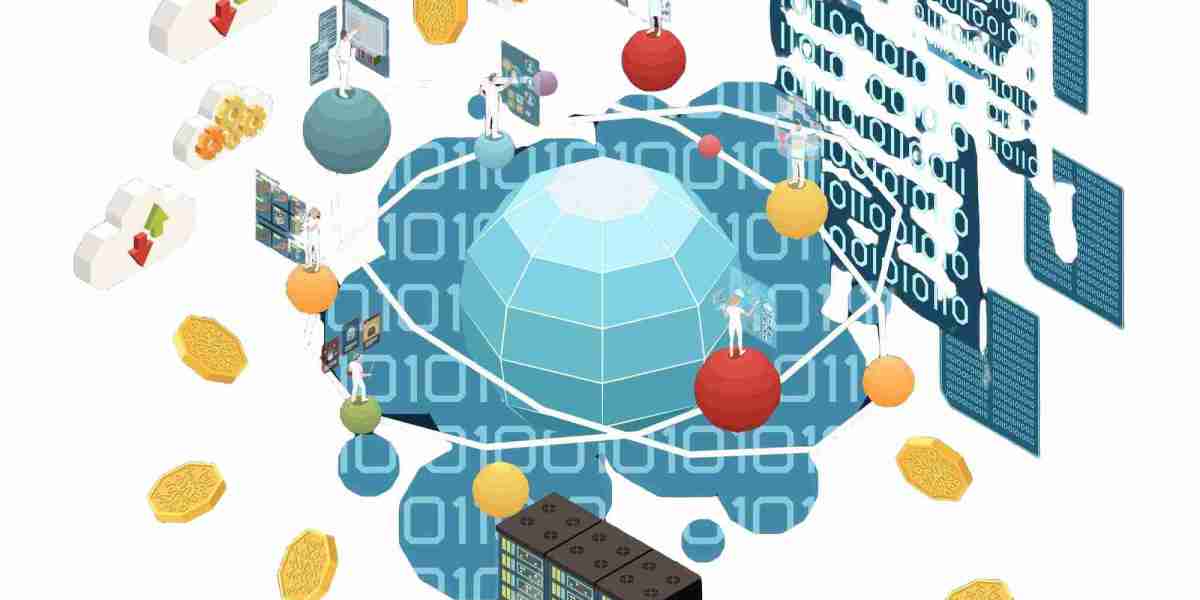Web 3.0, often hailed as the next evolution of the internet, has generated significant buzz and a multitude of debates. Promising to redefine data ownership, user experience, and digital identity through decentralization and blockchain technology, Web 3.0 could reshape how businesses operate and employees work. While some argue that Web 3.0 is overhyped in its current state, its eventual integration into the workplace could bring substantial changes to everything from productivity tools to workplace structures.
In this article, we’ll explore the potential impact of Web 3.0 on the future of work and the ways tools like time tracker for employees could evolve in a decentralized and user-centric internet landscape.
Understanding Web 3.0: Beyond the Hype
To understand the significance of Web 3.0, it’s essential to look at how it differs from previous iterations of the internet:
- Web 1.0 (The Static Web): Web 1.0 represents the earliest phase of the internet, where static web pages provided information in a largely one-way format. Content was read-only, and user interaction was minimal.
- Web 2.0 (The Social Web): Web 2.0 brought interactive features, user-generated content, and social media. It enabled two-way communication, allowing users to contribute content and share information. However, Web 2.0 has also led to data centralization, where major platforms control user data and monetize it through ads and tracking.
- Web 3.0 (The Decentralized Web): Web 3.0, still in development, aims to transform the internet into a decentralized, user-owned platform through blockchain technology, smart contracts, and peer-to-peer networks. Its core principles are data ownership, interoperability, transparency, and security.
While some claim that Web 3.0 is years away from mainstream adoption, it has the potential to change fundamental aspects of digital work environments, from collaborative tools to identity management.
Potential Impacts of Web 3.0 on the Future of Work
If Web 3.0 becomes a reality, it could lead to a workplace shift characterized by enhanced transparency, new collaboration methods, and greater user control. Below are some ways Web 3.0 could influence the future of work.
1. Decentralized Workplaces and Remote Collaboration
The decentralization of Web 3.0 could lead to truly distributed workplaces. Rather than relying on centralized corporate networks and proprietary software, employees could collaborate on decentralized platforms, accessing tools and data directly through blockchain networks. With these platforms, data would no longer need to be stored in centralized databases; instead, it could be managed and accessed on decentralized ledgers.
Tools like time trackers for employees could be integrated into these systems, with data that employees generate being more transparent and securely stored on decentralized networks. This structure would also enhance the security and privacy of employee records, as they would be accessible only to authorized parties and would not be prone to data breaches on a central server.
2. Tokenized Incentives and Employee Engagement
One of the most revolutionary aspects of Web 3.0 is the use of tokens to create value within digital ecosystems. This tokenization could translate to workplaces, where businesses could reward employees with digital tokens for completing projects, achieving milestones, or demonstrating leadership. Employees could use these tokens for perks, bonuses, or even trade them on token exchanges, adding a new layer of value to their contributions.
Tokens could become a part of engagement and incentive strategies, fostering an environment where employees feel directly rewarded and recognized for their work. Furthermore, these token systems would be transparent, as they operate on blockchain ledgers. Employees could access a record of all earned tokens and track their value in real-time, reinforcing a sense of ownership in the workplace.
3. Enhanced Employee Ownership of Data
Data ownership is a core tenet of Web 3.0, which aims to give users control over their information rather than centralizing it on third-party servers. For employees, this could mean greater control over their work-related data, from performance metrics to timesheets.
Currently, most companies store employee information in internal databases managed by the organization. However, with Web 3.0, employees could have control over their personal and performance data, managing access to it through decentralized identity (DID) frameworks. For example, employees using a time tracker for employees could have full ownership of their logged hours, allowing them to securely share or withhold their data when necessary, rather than being dependent on an organization’s tracking software.
4. Autonomous Organizations (DAOs) and Workplace Structures
Decentralized Autonomous Organizations, or DAOs, represent a new organizational model where decision-making is handled through smart contracts and distributed consensus rather than traditional hierarchies. While this model may not fully replace conventional corporations, some companies are experimenting with DAOs for specific projects and initiatives.
With DAOs, employees become members with voting rights, allowing them to propose and vote on projects, budgeting, or changes in workplace policies. This system could lead to a more democratic, transparent workplace structure where employees have more say in organizational decisions. Additionally, project-based, temporary DAOs could be used to bring together global talent for specific objectives, then dissolve after achieving the project’s goals.
5. Smart Contracts for Employment Agreements
Another aspect of Web 3.0 that could reshape the future of work is the use of smart contracts, self-executing agreements coded on a blockchain. Smart contracts could streamline traditional employment agreements, automating processes like payment, benefits allocation, and tax deductions.
For instance, a smart contract could be set up to release payments based on hours tracked in a time tracker for employees or milestones achieved in a project. This would reduce administrative overhead and improve transparency, as payments would be automatically processed based on real-time data recorded on a blockchain. Employers and employees alike would benefit from the reduced time spent on manual transactions and paperwork.
6. Security and Trust Through Decentralization
One of the major advantages of Web 3.0 is its increased security through decentralization and blockchain encryption. Cybersecurity threats and data breaches are some of the most pressing issues companies face today, particularly with the rise of remote work and digital communication. Web 3.0 could improve security by eliminating single points of failure, as data would be encrypted and stored across multiple nodes rather than in centralized servers.
For employees, this means that sensitive data—like personal information, salary records, and time-tracking logs—would be protected on a decentralized network. In the long run, this could increase trust between employees and employers, as data integrity and privacy would be less susceptible to manipulation or unauthorized access.
7. Evolving Tools for Workforce Management
With Web 3.0, workforce management tools could undergo significant changes, shifting to decentralized models. This could allow for more transparency in employee management, including how time is tracked, tasks are assigned, and performance is evaluated.
Time tracking apps for employees, for example, could evolve to work in a decentralized environment, where employees manage their schedules and hours while securely storing their data on a blockchain. By giving employees direct control over their time management and performance data, businesses can foster a workplace that is more transparent and trust-oriented. Additionally, these time-tracking tools could allow freelancers and remote employees to submit verifiable hours to clients across borders without relying on third-party intermediaries.
Conclusion
While Web 3.0 might seem like an overhyped concept today, its potential to reshape the future of work is undeniable. By introducing decentralization, transparency, and data ownership, Web 3.0 can empower employees, streamline workplace processes, and make business operations more secure. However, for Web 3.0 to deliver on its promises, it will require significant technological advancements and widespread adoption.
For companies willing to experiment and innovate, embracing aspects of Web 3.0 could unlock new opportunities in workforce management, collaboration, and employee engagement. From time trackers for employees to decentralized autonomous organizations, the future of work in a Web 3.0 era holds possibilities that are both radical and sensible, ultimately transforming how we work, share, and grow in an increasingly digital world.



